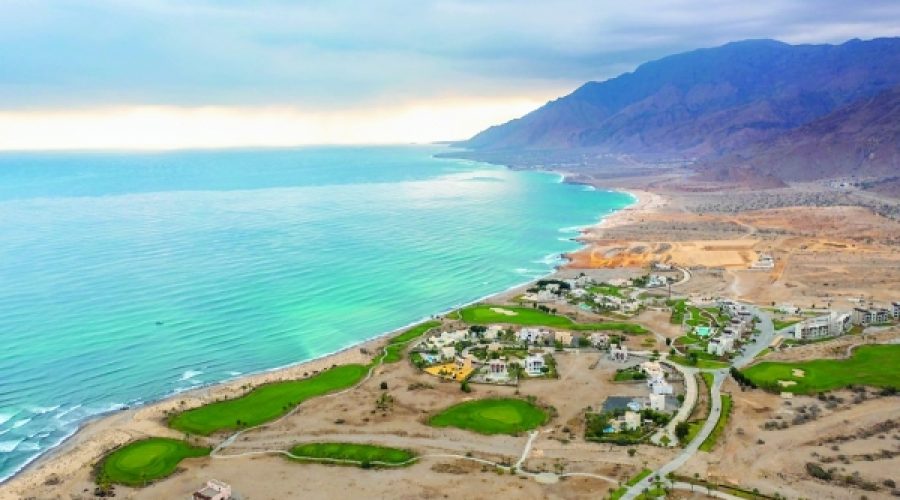Tourism and Heritage Boost Oman’s Non-Oil Growth: Key Opportunities for Investors and Entrepreneurs
MUSCAT: Oman’s heritage and tourism sectors have demonstrated robust performance during the first nine months of 2025, highlighting their expanding contribution to the country’s economic diversification and enhancing Oman’s standing as a sustainable cultural and tourism destination that harmoniously combines tradition with modern development.
The Ministry of Heritage and Tourism reported that the tourism sector’s direct added value reached RO 873 million, with the total tourism output rising to RO 1.99 billion. The sector now accounts for 2.7 percent of Oman’s GDP, emphasizing its growing significance within the non-oil economy. Government revenues linked to the Ministry’s activities amounted to RO 13.55 million by the end of September, reflecting improved financial outcomes and increased demand for tourism services.
Hotel revenues increased by 6.1 percent to RO 293.4 million, driven by higher occupancy rates and an expanded array of tourism programmes. By the close of the third quarter, Oman had welcomed 2.83 million international visitors—a slight decrease compared to the previous year—while domestic tourism surged to 13.6 million visits, bolstered by festivals, events, and seasonal activities. Hotel guest numbers grew by 4.6 percent to 4.6 million, underlining sustained confidence in Oman’s tourism sector.
As part of its global promotional strategy, the Ministry expanded its international representative network by opening new offices in China, Russia, and Spain, with additional offices planned in Singapore, Indonesia, Malaysia, and Thailand. These 11 offices operate campaigns across 25 countries and have generated over RO 30 million in direct returns. Oman also participated in more than 20 international exhibitions, earning accolades for pavilion designs that creatively blend heritage with modern digital elements. A collaborative promotional campaign with CNN further boosted Oman’s global visibility.
In the cruise and charter tourism sector, the Ministry progressed initiatives from its sectoral study aimed at improving port infrastructure and regulatory frameworks. Charter flights for the 2024–2025 season rose from 466 to 588, drawing 93,000 tourists and generating an estimated $80 million in economic returns. Moreover, 30 local tourism events held in partnership with various organizations contributed RO 4 million to the economy.
Hotel infrastructure expanded further, with the number of establishments reaching 1,309 and hotel rooms increasing by 7.9 percent to 38,000. Overall occupancy rates remained stable, achieving 52.6 percent in three- to five-star hotels. The Ministry issued 383 preliminary approvals for new accommodation projects, with 114 developments currently underway, expected to open between 2025 and 2027. Investments in integrated tourism complexes have now surpassed RO 11.5 billion.
From January to September, the Ministry signed 36 concession agreements valued at RO 100 million for new tourism ventures. Employment in the tourism sector reached 169,800, with Omanisation increasing to 10.9 percent.
In the heritage sector, Oman continues to preserve its cultural heritage with 3,655 registered historical and archaeological sites, 1,328 of which have been restored. Efforts are ongoing to prepare the World Heritage nomination dossier for the archaeological sites of Bisya and Salut.
Regionally, Oman recorded strong hotel occupancy rates in September 2025, with Muscat at 66.7 percent and Salalah at 56.7 percent. Oman’s natural landscapes, tranquil environment, and diverse tourism offerings—including adventure, heritage, and ecotourism—continue to enhance its competitiveness in both Gulf and international markets. — ONA
Special Analysis by Omanet | Navigate Oman’s Market
Oman’s robust growth in heritage and tourism, with sector contributions rising to 2.7% of GDP and expanding international outreach, signals strong diversification away from oil dependency. Businesses should capitalize on the expanding hotel infrastructure, increased domestic tourism, and international marketing efforts to tap into growing demand. Smart investors must consider opportunities in integrated tourism complexes and port infrastructure enhancements, while also monitoring the evolving regulatory environment to maximize returns in this rapidly developing sector.



